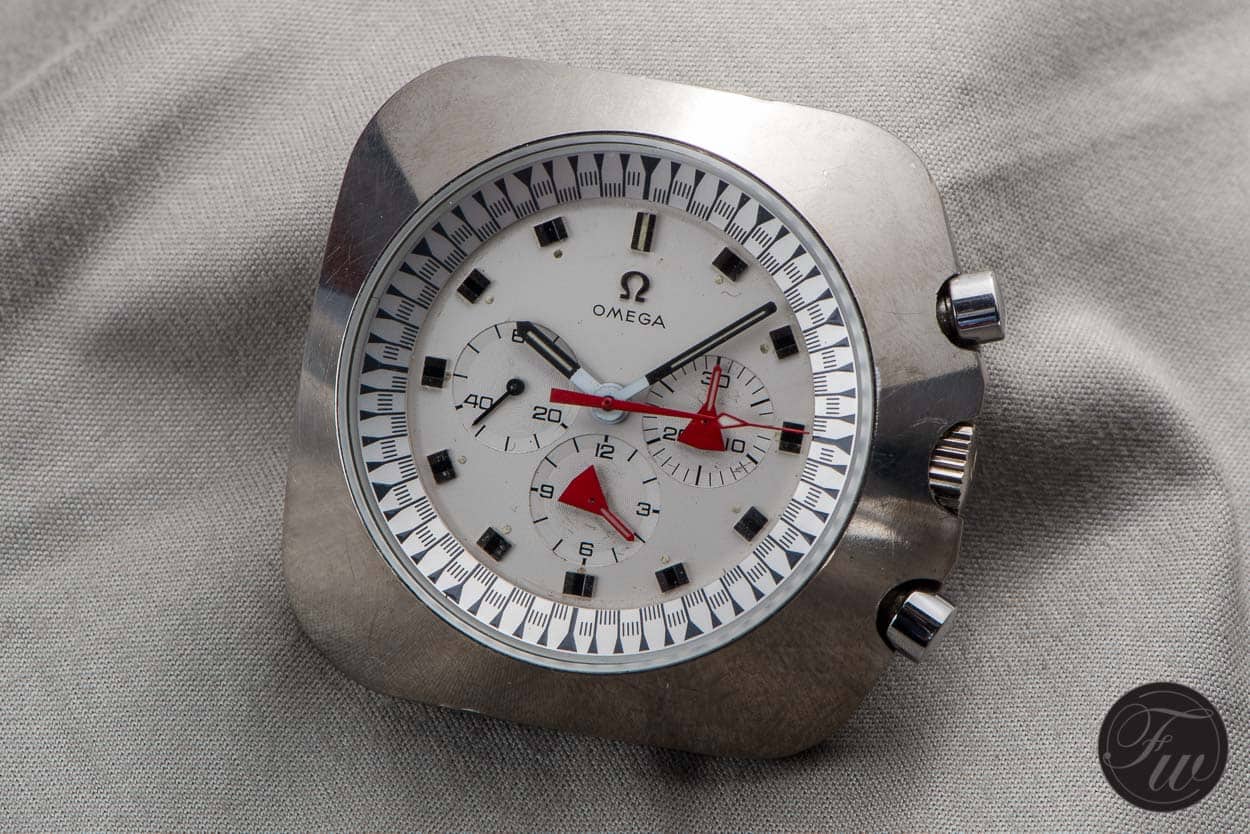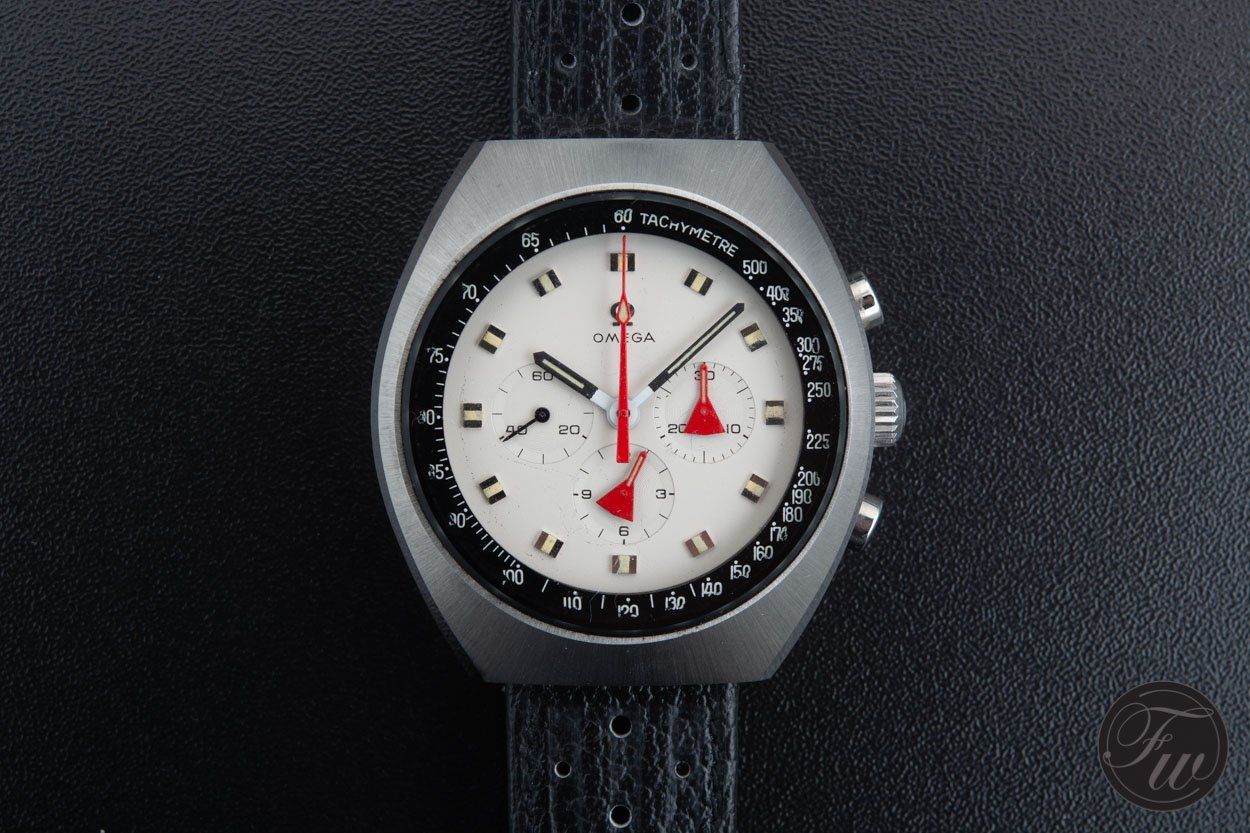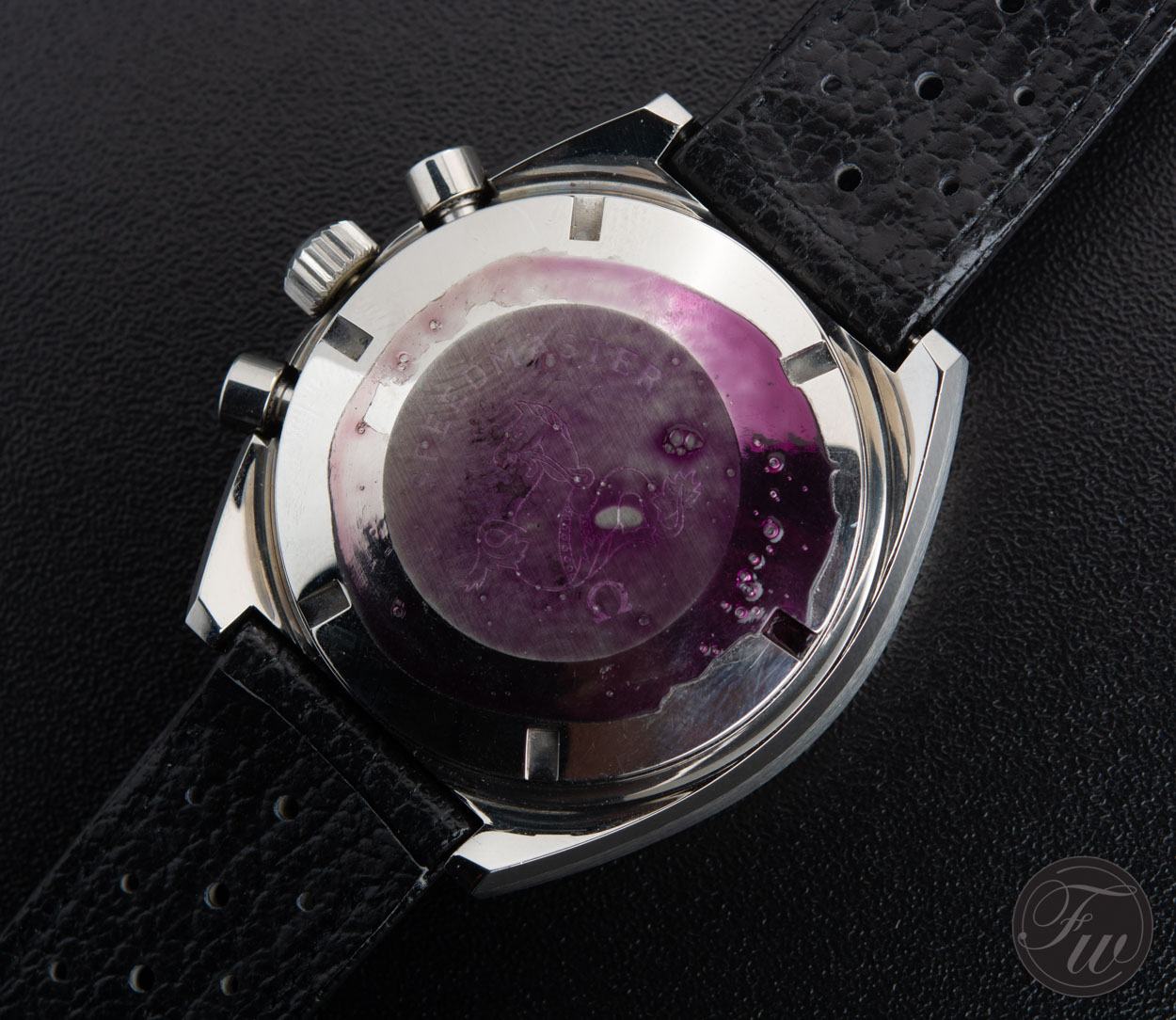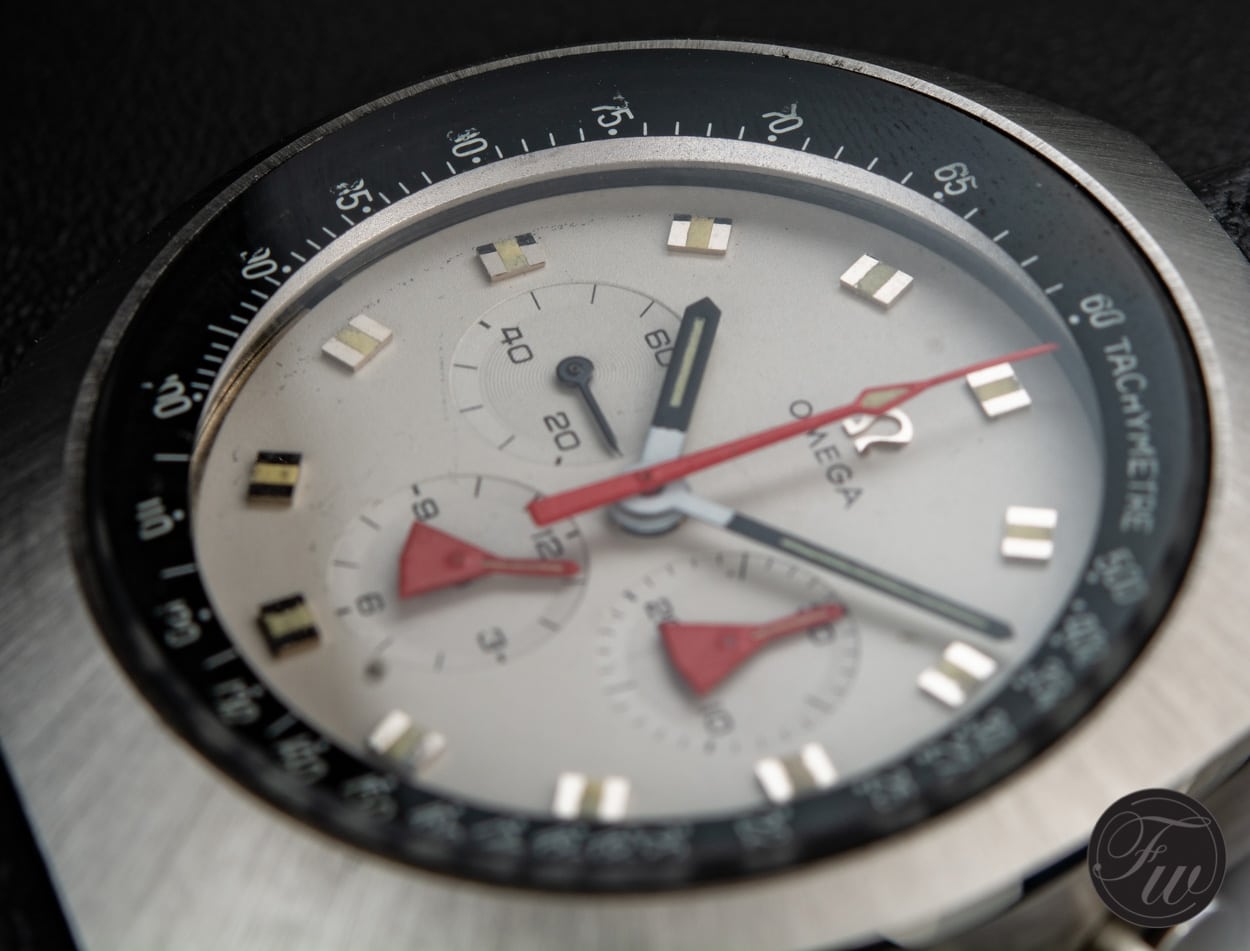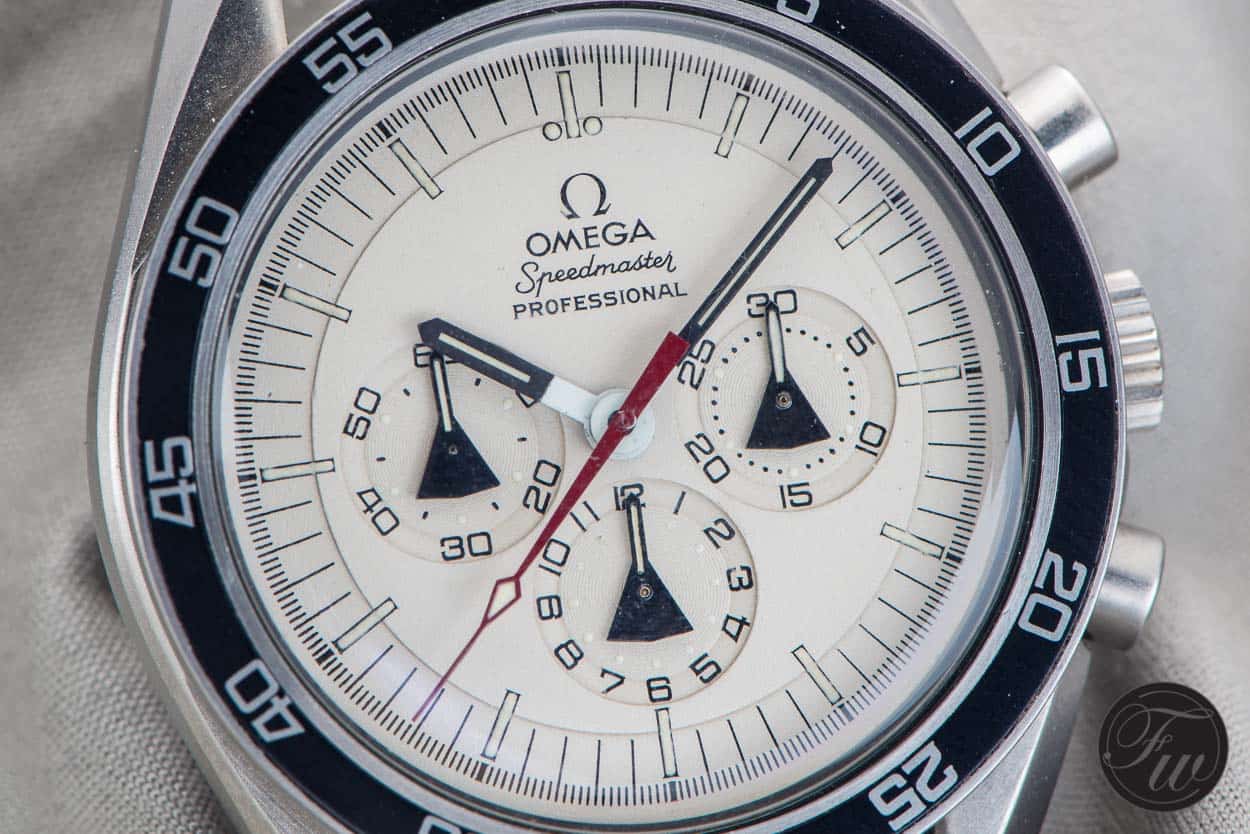What Makes The Omega Speedmaster Alaska I Project Watch So Special?
Last weekend this Speedmaster Alaska I Prototype fetched CHF193,750 (including the premium). But what is this watch exactly and what makes it so special? For this Speedy Tuesday feature, we try to break it down for you.
Speedmaster Alaska 1 Project
Omega was already the chronograph of choice for NASA, based on the procurement and test procedures it was qualified in 1965 for all manned space flights. So, on the wrist of the Apollo astronauts, there were already the Speedmaster 105.003, 105.12 and 145.012 references. But the story did not end there. Omega was constantly working on projects and sometimes send unsolicited packages to NASA to give a watch a try. These projects for NASA received a codename, in this case, ‘Alaska’. Omega often used names of cities, countries or states for secret projects. Hence Alaska.
Lunar Surface Chronograph
The Alaska Project actually begins by NASA engineer James H. Ragan. One of his projects was called the “Lunar Surface Chronograph”. He wanted a watch that would be able to withstand the heat and cold that astronauts would have to deal with when staying for a longer period on the Moon surface. You have to know that temperatures on the Moon can go up to 120 degrees Celsius in the Sun (no atmosphere of course), it had to be shockproof (use on the Lunar Rover) and so on. The first Alaska Project watch that Omega developed, was this crazy big titanium watch. With a silvery white dial. This was meant for the reflection of heat (of the Sun), that otherwise might have become too much for the watch. On that watch, there are also the famous rocket hands that people sometimes refer to as Apollo hands (but look more like Gemini).
Mark II Case
This Alaska project watch was very expensive because of the case, so what Omega did was using the Mark II case instead. NASA engineer Jim Ragan was a fan of that case we’ve been told, so the Mark II was a good pick to at least stay similar to the design of the first Alaska prototype. The Mark II case was introduced a bit earlier, so it was available for Omega to use for this model. They did not have to design a new case, basically. Also interesting to note is that Ragan actually preferred the watches to come with a plexi crystal (or Hesalite), but the Mark II was fitted with a mineral crystal instead. Despite his reservation for these mineral crystals, he did not manage to crack or damage them during the testing process.
Return To Sender
Normally, when Omega sent a prototype to NASA for testing purposes, these orders were marked with a “Send back after use” comment. In the case of the auctioned watch, it was not marked to be returned afterwards. So NASA was allowed to keep them. That’s why Omega lost track of what happened to them and provides a plausible reason why this Speedmaster Alaska I Project watch ended up on the market.
Rehaut Missing
In total, there have been 4 watches like this Speedmaster Alaska I Project model sent to NASA for testing purposes. Basically in two variations, two watches with a white dial like this model and two with a black dial (with white rocket hands). As you can see on the images, the watch still has the protective stuff on the case back.
You might have noticed that there is a bit of a gap between the dial and the mineral crystal. The rehaut is basically missing. We asked Omega about this, and they informed us that this was done on purpose as they knew that Ragan was keen on having the possibility of other scales as tachymeter (hence the diving-type bezel with 5-minute scale). Already in the letter that he sent to Omega confirming that the Speedmaster 105.003 was qualified for NASA in 1965, he indicated that he would be open for a bezel with a more usable scale. In one of the Alaska prototypes, you will find the 5-minute bezel being used (see below).
The movement inside is the calibre 861 that was also used in the Speedmaster Mark II as you probably know. This Lémania based movement was the successor of the caliber 321 that was used before Omega started using the caliber 861 movement in 1968.
With this Omega Speedmaster Alaska I Project watch, the buyer has acquired a very rare piece with a cool piece of NASA history to it.
Additional information via the Phillips catalog.





